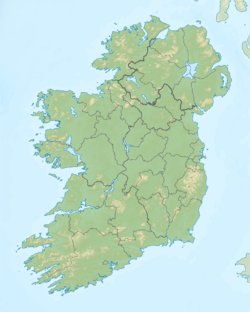Lebor na hUidre facts for kids
Quick facts for kids Lebor na hUidre |
|
|---|---|
| Royal Irish Academy | |
| Also known as | Book of the Dun Cow |
| Type | Compilation of early Irish literature |
| Date | Before 1106 (with later additions) |
| Place of origin | Clonmacnoise |
| Language(s) | Middle Irish, with some Latin words |
| Scribe(s) | Máel Muire mac Céilechair and two others |
| Material | Vellum |
| Size | 32cm x 24cm |
| Format | Folio |
| Condition | Damaged, only 67 pages remaining |
| Script | Irish minuscule |
| Discovered | 1844 |
The Lebor na hUidre (pronounced roughly "LEV-or na HOO-id-ra") is also known as the Book of the Dun Cow. It is a very old Irish vellum manuscript from the 12th century. Vellum is a special type of parchment made from animal skin. This book is the oldest surviving manuscript written in the Irish language.
Today, the Book of the Dun Cow is kept at the Royal Irish Academy in Ireland. It is quite damaged, with only 67 pages left. Many of the stories inside are not complete. The book gets its unusual name from an old legend. This legend says it was made from the hide of a "dun cow" by a saint named Ciarán of Clonmacnoise.
Contents
The Book's Journey Through Time
Who Wrote the Book of the Dun Cow?
Experts believe three different scribes, or writers, worked on this manuscript. Their handwriting styles were first noticed in 1912. They are called Scribe A, Scribe M, and Scribe H. Scribes A and M likely worked on the book around the same time.
Scribe A started the manuscript and wrote the first parts of several stories. Scribe M then continued these stories. Scribe M has been identified as Máel Muire mac Céilechair. We know this because he wrote his name in the margins of the book. Another note in the manuscript also says Máel Muire "wrote and compiled this book."
When Was the Book Written?
Máel Muire mac Céilechair was sadly killed by Vikings in Clonmacnoise in the year 1106. This event is recorded in old Irish historical records called the Annals of the Four Masters. This date tells us that the main part of the book must have been finished before 1106. This also tells us the book was likely created in Clonmacnoise.
Later, another scribe, Scribe H, added new texts and passages. Sometimes, Scribe H wrote over parts of the original text that had been erased. Other times, he added new pages. Based on the way he wrote and some English words he used, Scribe H probably worked on the book in the late 12th or early 13th century.
Where Has the Book Been Kept?
After the monastery of Clonmacnoise closed, the Book of the Dun Cow was owned by the O'Donnell dynasty. They were a powerful family from County Donegal. They kept the book until 1359. In that year, the book was used to help free members of their family who had been captured.
The book was recovered by Áed Ruad O'Donnell in 1470. It stayed in Donegal until at least 1631. Its location was unknown for a long time after that. Then, in 1837, it was found as part of a collection in Dublin. This collection was bought by the Royal Irish Academy in 1844, where the book remains today.
How Do We Study the Book Today?
Because the original book is so old and fragile, copies have been made. In 1870, a special printed copy was made. Later, in 1929, a very detailed copy was published. This copy used different typefaces to show which parts were written by Scribe A, Scribe M, and Scribe H. Today, you can even see digital scans of the pages online through a project called ISOS (Irish Script on Screen).


